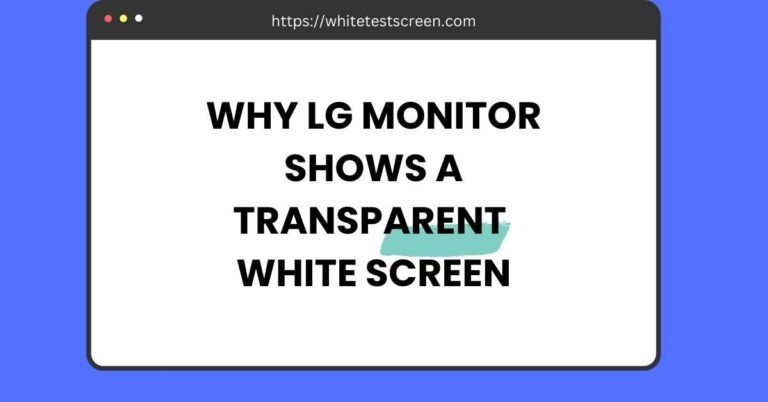
Why Use a White Screen Tool for Product Photography?
Good lighting is key to great product photos, but getting it right can be tough without expensive equipment.
A white screen tool can help small businesses and hobby photographers create even, balanced lighting on a budget.
This simple setup brings out details, reduces shadows, and makes products look more appealing.
In this blog, we’ll explore how a white screen can improve product photography and help sellers create professional images from home.
Find the complete steps, top benefits, and useful tips to make the most of this easy photography tool!
1. Introduction: What is Product Photography and Why Does It Matter?
What is Product Photography?
Product photography is the art of taking pictures of items, focusing on their features, details, and quality to showcase them online.
It’s essential for anyone selling products online, including e-commerce businesses, brands, and marketers. The main goal is to present items in a way that makes them look appealing, trustworthy, and accurately represented, which helps potential customers make informed buying decisions.
Why is Good Product Photography Crucial?
High-quality product photos significantly impact how customers perceive a product. Clear, appealing visuals can create trust, boost the perceived value of a product, and ultimately lead to higher sales conversions.
When a product looks professionally presented, customers are more likely to trust its quality and believe in the value of the purchase. On the other hand, blurry or poorly lit photos can make products look unappealing or cheap, which may turn potential buyers away.
How Does Lighting Influence Product Images?
Lighting is crucial in product photography as it affects how colors, details, and textures appear in photos. With the right lighting setup, product photos look clear, detailed, and true-to-life. Poor lighting can distort colors, hide important details, and make products appear dull.
This is why having a reliable lighting setup is so important— it allows photographers to create photos that are vibrant, accurate, and attractive to viewers. A good lighting setup brings out the product’s best qualities, making it more likely to catch the eye of potential customers.
2. Importance of Lighting in Product Photography
What Role Does Lighting Play in Product Photography?
Lighting affects everything about a product image—its sharpness, colors, and overall appeal. Good lighting brings out the fine details of a product, allowing buyers to see exactly what they’re getting.
It ensures the product looks clear and in focus, highlighting textures, materials, and unique features. When lighting is balanced, it adds depth and visual interest, making the product appear more attractive.
Why is Consistent Lighting Key?
Consistent lighting makes sure that all product photos have the same look and quality, even if taken at different times or from various angles. Inconsistent lighting can create unwanted shadows, color shifts, and focus issues that make the product look different in each shot, potentially misleading customers.
For example, inconsistent lighting may cause a product to appear in varying shades, making it hard for buyers to judge its actual color. Keeping lighting consistent makes sure that every product image accurately reflects what the customer can expect.
When is a White Screen Ideal for Lighting?
A white screen is especially helpful for product photography when a balanced, straightforward lighting solution is needed on a budget. It provides a smooth, consistent background that enhances the product without adding distracting shadows.
For small businesses, hobby photographers, or those working in limited space, a white screen setup can provide the even lighting needed for clear, professional-looking product images without requiring complex or costly equipment.
3. How a White Screen Provides Balanced, Even Lighting
What is a White Screen in This Context?
IIn product photography, a white screen is simply a bright, even white background that can be displayed on a device screen, such as a monitor, tablet, or mobile phone.
This white background acts as a light source, creating an illuminated surface that helps products stand out. It’s used to bring consistency and balance to lighting, making products look crisp and evenly lit.
Why Does a White Screen Create Even Lighting?
A white screen creates even lighting by minimizing shadows and ensuring a clean background that reflects light uniformly. This setup is especially useful for smaller items, as it prevents harsh shadows and dark areas, making every part of the product visible and well-lit.
The white background also provides a neutral color base that helps display the product’s actual colors and details accurately. For photographers aiming for clarity, the white screen offers an affordable way to achieve a soft and even light effect that enhances the product’s features.
When Should Photographers Use a White Screen as Lighting?
A white screen is ideal for simple product photoshoots, especially when space is limited or professional lighting equipment isn’t available. It’s beneficial for small spaces like home studios or rooms with limited natural light.
The white screen provides a straightforward, portable solution that can be set up anywhere, making it a convenient choice for photographers who need quick and easy lighting without compromising on quality.
How Does it Compare to Professional Lighting Setups?
Compared to professional lighting setups, a white screen is a much more affordable and convenient option.
While professional lighting can offer more control over brightness, angle, and color temperature, a white screen can still deliver excellent results for small products, especially when the main goal is to achieve clear, well-lit photos.
This approach is especially beneficial for beginners, small business owners, and DIY photographers who want to improve their product photography without making a big investment in professional lighting equipment.
The white screen offers an effective alternative for creating appealing images that showcase products in the best light possible.
4. Steps to Set Up a White Screen for Product Photography
What Equipment Do You Need?
Setting up a white screen for product photography requires just a few essential items:
- A Device to Display the White Screen: You’ll need a computer, tablet, or smartphone to show the white screen. This device will act as the background for your product photos.
- The Product to Photograph: This is the item you want to showcase. It can be anything from jewelry to gadgets or cosmetics.
- A Camera or Smartphone: You’ll need a camera or a smartphone with a decent camera to take the photos. Most modern smartphones have cameras that are good enough for product photography.
How to Set Up a White Screen?
Follow these simple steps to set up your white screen for product photography:
- Visit a White Screen Tool Website: Go to a website that provides a white screen tool, like White Test Screen. This site allows you to display a bright, white screen on your device.
- Adjust the Brightness: Once the white screen is displayed, adjust the brightness settings on your device. The goal is to have a soft, even white light that minimizes harsh shadows and ensures the background looks clean and bright.
- Position the Product: Place your product in front of the white screen or set the white screen behind the product for backlighting. If using backlighting, ensure the product is well-lit from the front as well to avoid shadows.
- Experiment with Angles: Move around the product and experiment with different angles. This helps you find the best position that avoids any unwanted shadows or reflections. Make sure the product is clearly visible and that the lighting is even across the surface.
Why Adjust Angles and Camera Settings?
Adjusting the angles and settings on your camera is important for capturing the best details of your product. Proper angles can prevent reflections that obscure the product and help you focus on its features. Use your camera settings to ensure clarity and sharpness, so your images look professional and appealing.
When is This Setup Best?
This setup is particularly effective for smaller products like jewelry, cosmetics, or gadgets. The white screen helps highlight intricate details while requiring minimal equipment, making it easy for anyone to achieve great results in their product photography.
5. Advantages for Small Businesses or Home-Based Sellers
Why is This Setup Ideal for Small Businesses?
For small businesses, using a white screen setup can be a game-changer. It removes the need for expensive lighting equipment, which can strain budgets. This cost-saving option allows small business owners to produce high-quality photos without significant financial investment, making it easier to showcase their products effectively.
How Does It Benefit Home-Based Sellers?
Home-based sellers can greatly benefit from this setup because it is simple to set up in any available space. There’s no need for large photography studios or complicated equipment.
A white screen can be easily displayed in a living room, home office, or even a spare room.
This flexibility allows sellers to take professional-looking photos without needing extensive photography knowledge or skills.
What Are the Primary Advantages?
Here are the main benefits of using a white screen for product photography:
- Cost-Effective: Saves money on lighting equipment and studio setups.
- Easy Setup: Requires minimal equipment and can be set up quickly in any location.
- Improved Photo Quality: Enhances the clarity and appeal of product images.
- Increased Online Sales Potential: Better photos attract more customers and can lead to higher sales.
When Should Businesses Consider Using a White Screen?
Businesses should consider using a white screen for product photography when selling on online marketplaces like Etsy, eBay, or social media platforms where high-quality images are essential.
Visually appealing photos can make a significant difference in attracting potential customers and boosting sales.
Conclusion
IIn conclusion, using a white screen is a cost-effective and versatile solution for enhancing product photography, making it ideal for beginners and small business owners.
It allows for the creation of bright, clear images that effectively showcase products without the need for expensive equipment.
While professional setups offer certain advantages, many can achieve excellent results with a white screen, especially for low-budget or small-scale photography.
Over time, this investment in quality visuals can improve sales and build brand credibility, ultimately leading to greater success in the online marketplace.






